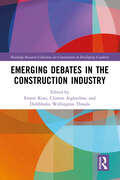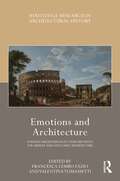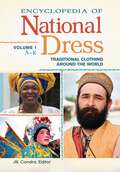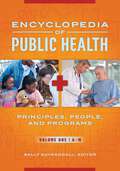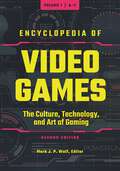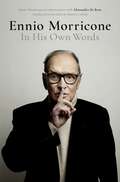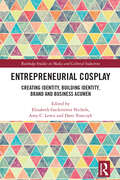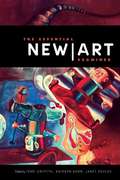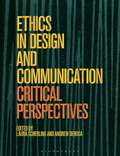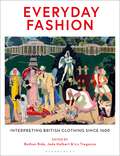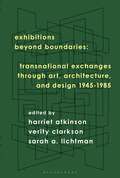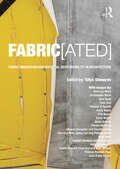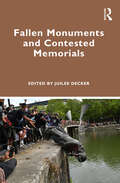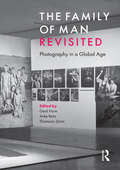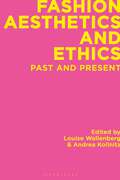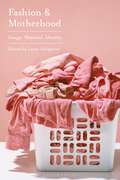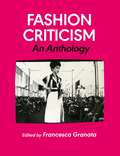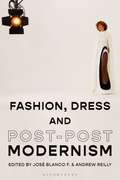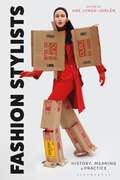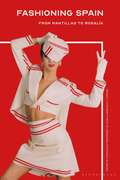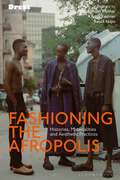- Table View
- List View
Emerging Debates in the Construction Industry: The Developing Nations’ Perspective (Routledge Research Collections for Construction in Developing Countries)
This book provides readers with an insightful understanding of the various emerging issues in the construction industry, especially in the area associated with United Nations developmental goals, 4th Industrial Revolution, Health and Safety, Sustainability, Skills and Capacity development. The need for all practitioner to understand growing issues surrounding the various evolving concepts or technologies in the construction industry remain critical to stakeholders if any meaningful gains are expected. This book explains the importance of inclusion, health and safety, skills development, collaboration, pandemics, the fourth industrial revolution, capacity building, and green finance, among others. Thus, it provides an in-depth understanding of the issues mentioned in developed and developing countries for construction professionals, researchers, educators, and other stakeholders. The book can be adopted as a research guide, framework, and reference on the emerging concepts in construction practices.
Emotions and Architecture: Forging Mediterranean Cities Between the Middle Ages and Early Modern Time (Routledge Research in Architectural History)
Emotions and Architecture: Forging Mediterranean Cities Between the Middle Ages and Early Modern Time explores architecture as a medium to arouse or conceal emotions, to build consensus through shared values, or to reconnect the urban community to its alleged ancestry. The chapters in this edited collection outline how architectonic symbols, images, and structures were codified – and sometimes recast – to match or to arouse emotions awakened by wars, political dominance, pandemic challenges, and religion. As signs of spiritual and political power, these elements were embraced and modulated locally, providing an endorsement to authorities and rituals for the community. This volume provides an overview of the phenomenon across the Italian region, stressing the transnationality of selected symbols and their various declinations in local contexts. It deepens the issue of refitting symbols, artworks, and structures to arouse emotions by carefully analysing specific cases, such as the Septizodium in Rome, the Holy House of Loreto in Venice, and the reconstruction of L'Aquila. The collection, through its variegated contributions, offers a comprehensive view of the phenomenon: exploring the issue from political, social, religious, and public health perspectives, and seeking to propose a new definition of architecture as a visual emotional language. Together, the chapters show how the representation of virtues and emotions through architecture was part of a symbolic practice shared by many across the Italian context. This book will be of interest to researchers and students studying architectural history, the history of emotions, and the history of art.
Empire State Building, USA (Large Print)
This image shows the 381 metre tall Empire State Building surrounded by a dashed line image border. The base of the building is on the bottom of the page. There is a locator dot shown, which will be at the top left of the page when the image is the right way up. At the bottom of the page two dots can be found, these represent the large entrance doorways. They show how tall the building is. Up from this the building stretches up, becoming narrower towards the top. At the top of the image, the building steps dramatically inwards, becoming narrower, finally reaching the broadcasting antenna.
Empire State Building, USA (UEB Contracted)
This image shows the 381 metre tall Empire State Building surrounded by a dashed line image border. The base of the building is on the bottom of the page. There is a locator dot shown, which will be at the top left of the page when the image is the right way up. At the bottom of the page two dots can be found, these represent the large entrance doorways. They show how tall the building is. Up from this the building stretches up, becoming narrower towards the top. At the top of the image, the building steps dramatically inwards, becoming narrower, finally reaching the broadcasting antenna.
Empire State Building, USA (UEB uncontracted)
This image shows the 381 metre tall Empire State Building surrounded by a dashed line image border. The base of the building is on the bottom of the page. There is a locator dot shown, which will be at the top left of the page when the image is the right way up. At the bottom of the page two dots can be found, these represent the large entrance doorways. They show how tall the building is. Up from this the building stretches up, becoming narrower towards the top. At the top of the image, the building steps dramatically inwards, becoming narrower, finally reaching the broadcasting antenna.
Encyclopedia of National Dress [2 volumes]: Traditional Clothing around the World [2 volumes]
This two-volume set presents information and images of the varied clothing and textiles of cultures around the world, allowing readers to better appreciate the richness and diversity of human culture and history.The contributors to Encyclopedia of National Dress: Traditional Clothing around the World examine clothing that is symbolic of the people who live in regions all over the world, providing a historical and geographic perspective that illustrates how people dress and explains the reasons behind the material, design, and style. The encyclopedia features a preface and introduction to its contents. Each entry in the encyclopedia includes a short historical and geographical background for the topic before discussing the clothing of people in that country or region of the world. This work will be of great interest to high school students researching fashion, fashion history, or history as well as to undergraduate students and general readers interested in anthropology, textiles, fashion, ethnology, history, or ethnic dress.
Encyclopedia of Public Health [2 volumes]: Principles, People, and Programs [2 volumes]
Providing context to today's public health practices and broad coverage of topics, this book demonstrates how cross-disciplinary studies are critical to addressing current health issues.The concepts of public health and the methods we use to care for and promote the health of people in communities, groups, and our nation as a whole are of interest to all health professionals. Comprising contributions from historians, scholars, researchers, sociologists, and other public health professionals, the Encyclopedia of Public Health: Principles, People, and Programs offers a firsthand, in-depth view of public health as it applies to everyday life and practice. The encyclopedia contains a wealth of information on critical theories, people, and movements and shows how various disciplines can work together to create healthy communities and practices for many people. As a secondary objective, the book encourages future generations to actively participate in public health. This reference covers the defining moments in the development of public health, from ancient times to the modern day, and offers entries with historical information and examinations of current controversies as they relate to recurring social conflicts. The entries provide a breadth and depth of content that is accessible to a wide readership. Readers will understand the benefits of physical activity and good nutrition as well as the psychology behind the choices that we make and how early life and social experiences can influence behaviors even decades after the event. The wide variety of topics covered includes the life expectancy of Americans at birth, the Tuskegee syphilis study, and marijuana use, and will give readers an informed perspective on past public health successes and likely directions for the future.
Encyclopedia of Video Games [3 volumes]: The Culture, Technology, and Art of Gaming [3 volumes]
Now in its second edition, the Encyclopedia of Video Games: The Culture, Technology, and Art of Gaming is the definitive, go-to resource for anyone interested in the diverse and expanding video game industry.This three-volume encyclopedia covers all things video games, including the games themselves, the companies that make them, and the people who play them. Written by scholars who are exceptionally knowledgeable in the field of video game studies, it notes genres, institutions, important concepts, theoretical concerns, and more and is the most comprehensive encyclopedia of video games of its kind, covering video games throughout all periods of their existence and geographically around the world.This is the second edition of Encyclopedia of Video Games: The Culture, Technology, and Art of Gaming, originally published in 2012. All of the entries have been revised to accommodate changes in the industry, and an additional volume has been added to address the recent developments, advances, and changes that have occurred in this ever-evolving field. This set is a vital resource for scholars and video game aficionados alike.
Ennio Morricone: In His Own Words
Master composer Ennio Morricone's scores go hand-in-hand with the idea of the Western film. Often considered the world's greatest living film composer, and most widely known for his innovative scores to The Good, the Bad, and the Ugly and the other Sergio Leone's movies, The Mission, Cinema Paradiso and more recently, The Hateful Eight, Morricone has spent the past 60 years reinventing the sound of cinema. In Ennio Morricone: In His Own Words, composers Ennio Morricone and Alessandro De Rosa present a years-long discussion of life, music, and the marvelous and unpredictable ways that the two come into contact with and influence each other. The result is what Morricone himself defines: "beyond a shadow of a doubt the best book ever written about me, the most authentic, the most detailed and well curated. The truest." Opening for the first time the door of his creative laboratory, Morricone offers an exhaustive and rich account of his life, from his early years of study to genre-defining collaborations with the most important Italian and international directors, including Leone, Bertolucci, Pasolini, Argento, Tornatore, Malick, Carpenter, Stone, Nichols, De Palma, Beatty, Levinson, Almodóvar, Polanski, and Tarantino. In the process, Morricone unveils the curious relationship that links music and images in cinema, as well as the creative urgency at the foundation of his experimentations with "absolute music". Throughout these conversations with De Rosa, Morricone dispenses invaluable insights not only on composing but also on the broader process of adaptation and what it means to be human. As he reminds us, "Coming into contact with memories doesn't only entail the melancholy of something that slips away with time, but also looking forward, understanding who I am now. And who knows what else may still happen."
Entrepreneurial Cosplay: Creating Identity, Building Identity, Brand and Business Acumen (Routledge Studies in Media and Cultural Industries)
Entrepreneurial Cosplay takes a comprehensive and insightful look at the business of cosplay, exploring the ways that artists and fans engage in entrepreneurial and intrapreneurial practices to gain personal and professional success. Centred around the concept of entrepreneurship and the newly emerging concept of intrapreneurship – using entrepreneurial principles to enhance or further an existing concept, organization or product – the book showcases the ways in which cosplayers create new ideas, new ways of working, and new ways of doing things, exploiting their knowledge to create new opportunities. By analyzing the numerous motivations driving cosplay behavior (self-expression, external recognition, and financial gain), this volume provides a unique view of current cosplay practice and its relationship to economic activity. Offering important insight into this emerging area, this book will be of interest to scholars seeking to learn how entrepreneurial and economic models may be used to understand the emerging field of cosplay studies, as well as students and scholars working in the fields of Entrepreneurship, Business, Fan Studies, Visual Art Studies, and Gender Studies.
The Essential "New Art Examiner"
The New Art Examiner was the only successful art magazine ever to come out of Chicago. It had nearly a three-decade long run, and since its founding in 1974 by Jane Addams Allen and Derek Guthrie, no art periodical published in the Windy City has lasted longer or has achieved the critical mass of readers and admirers that it did. The Essential New Art Examiner gathers the most memorable and celebrated articles from this seminal publication. First a newspaper, then a magazine, the New Art Examiner succeeded unlike no other periodical of its time. Before the word "blog" was ever spoken, it was the source of news and information for Chicago-area artists. And as its reputation grew, the New Art Examiner gained a national audience and exercised influence far beyond the Midwest. As one critic put it, "it fought beyond its weight class." The articles in The Essential New Art Examiner are organized chronologically. Each section of the book begins with a new essay by the original editor of the pieces therein that reconsiders the era and larger issues at play in the art world when they were first published. The result is a fascinating portrait of the individuals who ran the New Art Examiner and an inside look at the artistic trends and aesthetic agendas that guided it. Derek Guthrie and Jane Addams Allen, for instance, had their own renegade style. James Yood never shied away from a good fight. And Ann Wiens was heralded for embracing technologies and design. The story of the New Art Examiner is the story of a constantly evolving publication, shaped by talented editors and the times in which it was printed. Now, more than three decades after the journal's founding, The Essential New Art Examiner brings together the best examples of this groundbreaking publication: great editing, great writing, a feisty staff who changed and adapted as circumstances dictated—a publication that rolled with the times and the art of the times. With passion, insight, and editorial brilliance, the staff of the New Art Examiner turned a local magazine into a national institution.
Ethics in Design and Communication: Critical Perspectives
This timely collection brings together critical, analytic, historical, and practical studies to address what ethics means in the practice of design.Designers face the same challenges as everyone else in the complex conditions of contemporary cultural life-choices about consumption, waste, exploitation, ecological damage, and political problems built into the supply chains on which the global systems of inequity currently balance precariously. But designers face the additional dilemma that their paid work is often entangled with promoting the same systems such critical approaches seek to redress: how to reconcile this contradiction, among others, in seeking to chart an ethical course of action while still functioning effectively in the world.Ethics in Design and Communication acknowledges the complexity of this subject matter, while also demonstrating that in the ongoing struggle towards an equitable and sustainable world, the talents of design and critical thought are essential. Featured case studies include graphic design internships today, the dark web, and media coverage of the 2016 US presidential election. The fact that within this book such a wide array of practitioners, scholars, critics, and professionals commit to addressing current injustices is already a positive sign. Nonetheless, it is essential that we guard against confusing the coercive force of moral imperatives with ethical deliberation when conceiving a foundation for action.
Everyday Fashion: Interpreting British Clothing Since 1600
Ordinary clothes have extraordinary stories. In contrast to academic and curatorial focus on the spectacular and the luxurious, Everyday Fashion makes the case that your grandmother's wardrobe is an archive as interesting and important as any museum store. From the moment we wake and get dressed in the morning until we get undressed again in the evening, fashion is a central medium through which we experience the world and negotiate our place within it. Because of this, the ways that supposedly 'ordinary' and 'everyday' fashion objects have been designed, manufactured, worn, cared for, and remembered matters deeply to our historical understanding.Beginning at 1550 – the start of an era during which the word 'fashion' came to mean stylistic change rather than the act of making – each chapter explores the definition of everyday fashion and how this has changed over time, demonstrating innovative methodologies for researching the everyday. The variety and significance of everyday fashion cultures are further highlighted by a series of illustrated object biographies written by Britain's leading fashion curators, showcasing the rich diversity of everyday fashion in British museum collections. Collectively, this volume scratches below the glossy surface of fashion to expose the mechanics of fashion business, the hidden world of the workroom and the diversity and role of makers; and the experiences of consuming, wearing, and caring for ordinary clothes in the United Kingdom from the 16th century to the present day. In doing so it challenges readers to rethink how fashion systems evolve and to reassess the boundaries between fashion and dress scholarship.
Exhibitions Beyond Boundaries: Transnational Exchanges through Art, Architecture, and Design 1945-1985
After World War II, museum and gallery exhibitions, industrial and trade fairs, biennials, triennials, festivals and world's fairs increasingly came to be used as locations for the exercise of "soft power," for displays of cultural diplomacy between nations and as spaces for addressing areas of social and political contestation. Exhibitions Beyond Boundaries opens with a substantial introduction to the key debates, followed by case studies that advance the field of exhibition histories both geographically and methodologically, focusing on postwar transnational exchange and the wider networks engendered through exhibitions. Chapters trace relations across Africa, Asia, Europe, the Middle East, the Pacific, and the United States of America, drawing on a range of approaches and perspectives, principally from art and design history but also from social, economic and political history, and museum studies. Featured case studies include the presentation of African-American Art at FESMAN '66 and FESTAC '77, the US's 1961 Small Industries Exhibition in Colombo, Israel's early appearances at the Venice Biennale, the Vatican Pavilion at the 1964-1965 New York World's Fair, and Hong Kong's Pavilion at Expo 70 in Tokyo.
Eyes Wide Shut: Behind Stanley Kubrick's Masterpiece (Stanley Kubrick Studies)
Twenty years after its release, Stanley Kubrick's Eyes Wide Shut remains a complex, visually arresting film about marriage, jealousy, domesticity, adultery, sexual disturbance, and dreams. This was the final enigmatic work from its equally enigmatic creator. It has left an indelible mark on our popular culture and remains as relevant as ever. Much maligned and much misunderstood when it first came out, Eyes Wide Shut has since been the subject of an animated debate and discussion among critics, fans and academics. It has been explored from a wide variety of disciplines and methodological perspectives. This collection brings scholars from diverse disciplinary backgrounds together with those who worked on the film to explore Eyes Wide Shut’s legacy, discuss its impact, and consider its position within Kubrick’s oeuvre and the wider visual and socio-political culture.
FABRIC[ated]: Fabric Innovation and Material Responsibility in Architecture
FABRIC[ated] examines fabric as a catalyst for innovation, reflection, change and transformation in architecture. This book explores the ways in which research and development of fabric can, and historically has, influenced and revolutionized architecture, teaching and design. Responsive, flexible, impermanent, fluid and adaptive—fabric interacts with, and influences architecture, offering innovative solutions and increased material responsibility. Foundation and theory chapters establish clear precedent and futures for fabric’s position in architectural discourse. The case study section examines 14 international projects through three different threads: Veiling, Compression and Tension. Case studies include a diverse range of projects from the HiLo unit at Nest and CAST’s fabric formed concrete projects to a discussion of the impact of fabric on SO-IL and Kennedy Violich Architect’s professional work, demonstrating new and fresh methods for addressing sustainability and social justice through the use of fabric in architecture. Through the work of the many authors of this book, we see fabric as drape, skin, veil, mold, concept and inspiration. Fabric, in its broadest definition, is an important and innovative material in the development of socially conscious architecture. Offering readers pedagogical and practical models for international projects highlighting fabric’s use in architecture, this book will appeal to the novice and the expert, architecture students and practitioners alike.
Fallen Monuments and Contested Memorials
Fallen Monuments and Contested Memorials examines how the modification, destruction, or absence of monuments and memorials can be viewed as performative acts that challenge prescribed, embodied narratives in the public realm. Bringing together international, multidisciplinary approaches, the chapters in this volume interrogate the ways in which memorial constructions disclose implicitly and explicitly the proxy battle for public memory and identity, particularly since 2015. Acknowledging the ways in which the past — which is given agency through monuments and memorials — intrudes into daily life, this volume offers perspectives from researchers that answer questions about the roles of monuments and memorials as persistent, yet mutable, works whose meanings are not fixed but are, rather, subject to processes of continual re-interpretation. By using monuments and memorials as lenses through which to view race, memory, and the legacies of war, power, and subjugation, this volume demonstrates how these works, and their visible representations of entitlement, possession, control, and authority, can offer the opportunity to pose and answer questions about whose memory matters and what our symbols say about who we are and what we value. Fallen Monuments and Contested Memorials is essential reading for scholars and students studying cultural heritage, history, art history, and public history. It will be particularly useful to those with an interest in public monuments and memorials; colonial and post-colonial history; memory studies; and nationalism, race, and ethnic studies.
The Family of Man Revisited: Photography in a Global Age
The Family of Man is the most widely seen exhibition in the history of photography. The book of the exhibition, still in print, is also the most commercially successful photobook ever published. First shown at the Museum of Modern Art in New York in 1955, the exhibition travelled throughout the United States and to forty-six countries, and was seen by over nine million people. Edward Steichen conceived, curated and designed the exhibition. He explained its subject as `the everydayness of life' and `the essential oneness of mankind throughout the world'. The exhibition was a statement against war and the conflicts and divisions that threatened a common future for humanity after 1945. The popular international response was overwhelmingly enthusiastic. Many critics, however, have dismissed the exhibition as a form of sentimental humanism unable to address the challenges of history, politics and cultural difference.This book revises the critical debate about The Family of Man, challenging in particular the legacy of Roland Barthes's influential account of the exhibition. The expert contributors explore new contexts for understanding Steichen's work and they undertake radically new analyses of the formal dynamics of the exhibition. Also presented are documents about the exhibition never before available in English. Commentaries by critical theorist Max Horkheimer and novelist Wolfgang Koeppen, letters from photographer August Sander, and a poetic sequence on the images by Polish poet Witold Wirpsza enable and encourage new critical reflections. A detailed survey of audience responses in Munich from 1955 allows a rare glimpse of what visitors thought about the exhibition. Today, when armed conflict, environmental catastrophe and economic inequality continue to threaten our future, it seems timely to revisit The Family of Man.
Fashion Aesthetics and Ethics: Past and Present
How are aesthetics and ethics related to the practical realities of the global fashion industry? Both have played an important role in academic fashion studies to this point, but they are most often discussed in the context of abstract phenomena such as modernity and capitalism, or identity issues such as sexuality, class and gender. The essays in this volume strive instead to show how the realities of the global fashion industry have important and pertinent aesthetic and ethical consequences.This collection provides critical and philosophical analysis of the interplay of aesthetics and ethics within the global fashion industry. Characterized by an increasingly fast spinning production, the industry is highly exploitative in terms of environment and labor force: underpaid textile workers, retailers working under brutal competition from the mass-merchandise discounters, young designers, seamstresses and curators often working for free, and a vast body of aspiring models. In addition, fashion-related aesthetic ideals are becoming more influential than ever in directing consumers in their social and personal identification processes and bodily practices with sometimes fatal consequences.Covering a wide range of subjects such as fashion's highly problematic production and consumption practices, the possibility of producing and consuming fashion ethically, fashion's intimate connection with nature and technology, Fashion Aesthetics and Ethics highlights the powerful aesthetical presence of fashion in relation to its ethical premises and often problematic outcomes.
Fashion and Motherhood: Image, Material, Identity
Motherhood, whether achieved through biological or other means, is not a rare experience; dressing oneself, even less so. The two phenomena are intimately linked, as both occur on and to the private body, and are also fully subject to social pressures and the changing tides of public opinion. They also, for anyone who experiences motherhood, define one another and work together to shape an individual's identity and place in their culture.This rich collection explores the essential question of how motherhood and fashion interact, interrogating their relationships to power, misogyny, temporality, longing and embodiment, among other themes. The 13 essays examine representations on film, in popular print and literature; they use images, narrative and material evidence from the past to excavate the historical cleavages in how mothers have been expected to hide, display, share and sacrifice their bodies. An international range of scholars explores the 19th to the 21st centuries, tracing how fashion and motherhood have operated as powerfully interdependent experiences and continue to determine how women are judged and corralled, yet also find meaning, connection and strength.
Fashion Criticism: An Anthology
This is the first anthology of fashion criticism, a growing field that has been too long overlooked. Fashion Criticism aims to redress the balance, claiming a place for writing on fashion alongside other more well-established areas of criticism.Exploring the history of fashion criticism in the English language, this essential work takes readers from the writing published in avant-garde modernist magazines at the beginning of the twentieth century to the fashion criticism of Robin Givhan-the first fashion critic to win a Pulitzer Prize-and of Judith Thurman, a National Book Award winner. It covers the shift in newspapers from the so-called “women's pages” to the contemporary style sections, while unearthing the work of cultural critics and writers on fashion including Susan Sontag and Eve Babitz (Vogue), Bebe Moore Campbell (Ebony), Angela Carter (New Statesman) and Hilton Als (New Yorker).Examining the gender dynamics of the field and its historical association with the feminine, Fashion Criticism demonstrates how fashion has gained ground as a subject of critical analysis, capitalizing on the centrality of dress and clothing in an increasingly visual and digital world. The book argues that fashion criticism occupied a central role in negotiating shifting gender roles as well as shifting understandings of race.Bringing together two centuries of previously uncollected articles and writings, from Oscar Wilde's editorials in The Woman's World to the ground-breaking fashion journalism of the 1980s and today's proliferation of fashion bloggers, it will be an essential resource for students of fashion studies, media and journalism.
Fashion, Dress and Post-postmodernism
Scholars have argued that postmodernism is dead and that we are entering into a new era that some have labelled altermodernism, digimodernism, performatism, and post-postmodernism. This book expands on the nascent scholarship of post-postmodernism to highlight how dress, fashion, and appearance are reflections of this new age.The volume starts with a discussion of fashion, subjectivity, and time and an analysis of temporality, technology, and fashion in post-postmodern times. Later chapters analyse the work of design houses and mass producers such as Vetements, Gucci, and Uniqlo whose products align with post-postmodern aesthetics, hyperconsumption, and hypermodern branding. The book looks at diverse geographic and identity markers by discussing post-postmodernism and the religio-politico-cultural questions in South Asian Muslim fashion, image and identity presentation in queer social networking apps, and by exploring fashion designer Tom Ford's output as a movie director. Two chapters discuss the post-postmodern fashion exhibition with analyses of recent exhibitions and an in-depth look at the work of exhibition maker Judith Clark. The final chapter is written by members of The Rational Dress Society, a counter-fashion collective that makes JUMPSUIT, an experimental garment to replace all clothes. Fashion, Dress, and Post-postmodernism is a companion to research on relationships between post-postmodernism, fashion, and dress, and the go-to resource for researchers and students interested in these areas.
Fashion Stylists: History, Meaning and Practice
Stylists have become increasingly influential in shaping fashion imagery. They have moved from the backstage, as unrecognised players, to the frontstage of fashion, becoming celebrated for their creative work as image makers for magazines, advertising and fashion designers. Yet little is known about the profession, its diverse incarnations and its aesthetic economy. Featuring contributions from leading experts and stylists, this collection is the first to explore the history, meaning and practice of fashion styling through interviews and historic and present-day case studies.Featuring in-depth contributions from prominent fashion scholars, chapters span historical periods, cultural contexts and theoretical frameworks, employing a range of methodologies in the international case studies upon which they're based. Interspersed with interviews with innovative fashion stylists working today, and drawing on examples from advertising, the catwalk and magazines, this book explores the challenges faced by stylists in a fashion system increasingly shaped by commercial pressures and by growing numbers of collections and seasons.Fashion Stylists is an invaluable resource for students and professionals interested in image-making, the representation of style and fashion, entrepreneurship and the history of fashion professionals.
Fashioning Spain: From Mantillas to Rosalía
Fashioning Spain is a cultural history of Spanish fashion in the 20th and 21st centuries, a period of significant social, political, and economic upheaval. As Spain moved from dictatorship to democracy and, most recently, to the digital age, fashion has experienced seismic shifts. The chapters in this collection reveal how women empowered themselves through fashion choices, detail Balenciaga's international stardom, present female photographers challenging gender roles under Franco's rule, and uncover the politicization of the mantilla. In the visual culture of Spanish fashion, tradition and modernity coexist and compete, reflecting society's changing affects.Using a range of case studies and approaches, this collection explores fashion in films, comics from la Movida, Rosalía's music videos, and both brick-and-mortar and virtual museums. It demonstrates that fashion is ripe with historical meaning, and offers unique insights into the many facets of Spanish cultural life.
Fashioning the Afropolis: Histories, Materialities and Aesthetic Practices (Dress Cultures)
With a focus on sub-Saharan Africa, Fashioning the Afropolis provides a range of innovative perspectives on global fashion, design, dress, photography, and the body in some of the major cities, with a focus on Lagos, Johannesburg, Dakar, and Douala. It contributes to the ongoing debates around the globalization of fashion and fashion theory by exploring fashion as a genuine urban phenomenon on the continent and among its diasporas. To date, “fashion” and “city” have not been systematically related to each other in the African context and, for too long, a western-centric gaze has dominated scholarship, resulting in the perception of Africa as provincial and its visual arts and textile cultures as static and folkloristic. This perspective is all the more distorted, given Africa's rich sartorial past. With a huge number of tailors ready to adapt and renew clothing, reshaping garments into contemporary styles, and many cities in Africa becoming hot-spots for a steadily growing and well-connected scene of fashion designers in the past 20 years, the time is ripe for a reevaluation and reconsideration of the fashionscapes of Africa. Leading scholars offer an updated empirical and theoretical foundation on which to base new and exciting research on sub-Saharan fashion, challenging perceptions and offering new insights.
